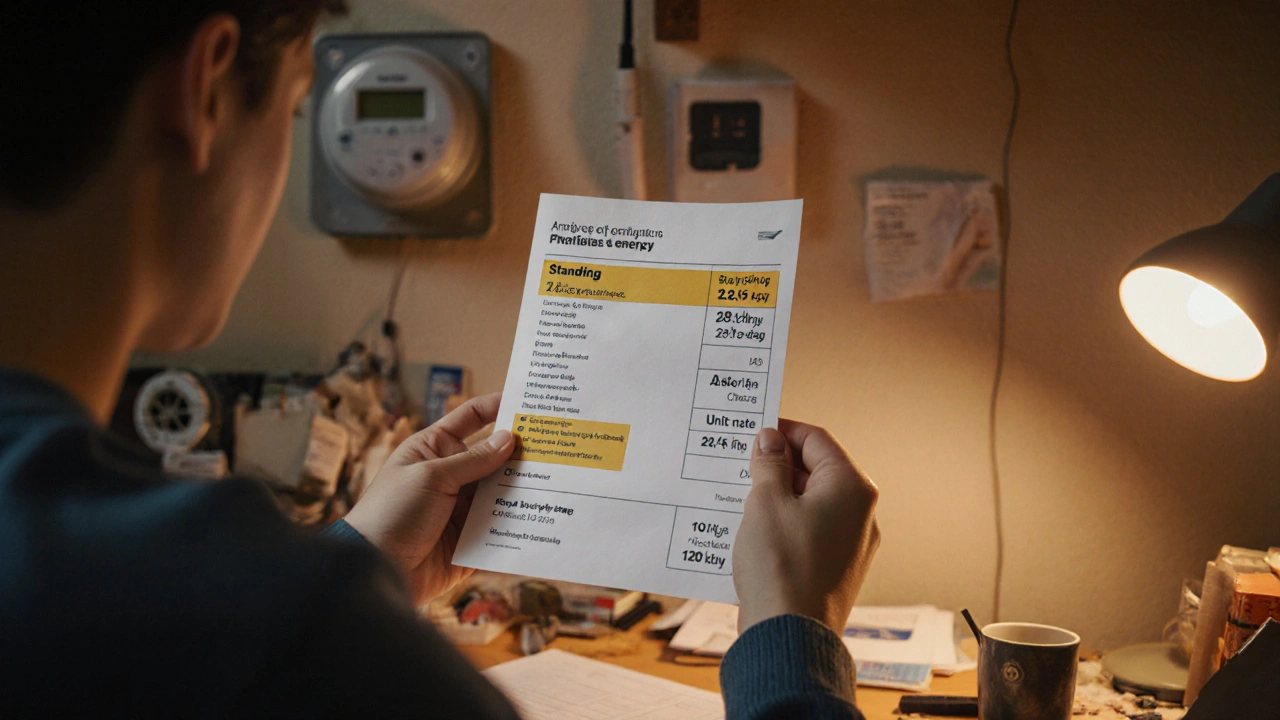Standing Charges Explained: What UK Students Need to Know About Utility Bills
When you see your first utility bill as a student in the UK, you might wonder why you’re being charged even when you haven’t used any gas or electricity. That’s the standing charge, a fixed daily fee added to your energy bill regardless of usage, common in UK domestic energy contracts. It’s not a mistake—it’s standard practice. Also known as a daily service fee, it covers the cost of keeping your home connected to the network, meter readings, and customer service. For students living in shared houses or university accommodation, this fee can add up fast, especially if you’re on a tight budget.
Standing charges work alongside unit rates—the price per kWh of energy you actually use. But unlike unit rates, which vary based on how much you turn on your heater or charge your phone, standing charges are constant. They’re charged every day, even if you’re away for the holidays or your flat is empty for a week. That’s why some students end up paying £10–£15 a month just to have the power turned on. The amount depends on your supplier, your region, and whether you’re on a fixed or variable tariff. In Scotland, standing charges tend to be lower than in London or the South East, and some suppliers offer tariffs with no standing charge at all—though those usually come with higher unit rates.
What’s tricky for students is that these fees rarely show up clearly on bills. They’re buried in the fine print or rolled into a single monthly total. If you’re on a direct debit, a regular automatic payment from your bank account, commonly used to pay utility bills in the UK, you might not even notice the standing charge because it’s spread evenly across the month. But if you pay by receipt or top-up, you’ll see it as a daily line item. And if you’re using a standing order, a fixed amount sent from your account on a set date, often used for rent or fixed bills to cover utilities, make sure it’s enough to cover both the standing charge and your actual usage. Many students get caught out when they set up a standing order based on last month’s usage and forget to account for the daily fee.
Some landlords or student housing providers include utilities in rent—but even then, the standing charge is still there. It’s just hidden in the rent price. If you’re paying separately, always ask your supplier for a breakdown. Compare tariffs using Ofgem’s official price cap data. The cheapest tariff isn’t always the one with the lowest unit rate—it’s the one that balances both unit rate and standing charge for your actual usage. If you’re in a house with five people and everyone’s home most of the time, a low standing charge with a slightly higher unit rate might save you money. But if you’re often away, studying abroad, or on placement, a zero standing charge tariff could be better—even if it costs more per kWh.
You’re not alone in finding this confusing. Most UK students don’t realize standing charges can vary by over 50% between suppliers. And if you’re an international student, this isn’t something you’d see back home. But now that you know, you can take control. Check your bill. Ask your housemates. Compare tariffs. And if you’re moving out mid-year, make sure you’re not paying for days you’re no longer there. The next time you see a utility bill, don’t just pay it—understand it. Below, you’ll find real student experiences, step-by-step guides to setting up payments, and tips to avoid overpaying on energy bills in the UK.
How to Read UK Energy Bills as a Student: Understand Unit Rates, Standing Charges, and Usage
Published on Oct 19
0 Comments
Learn how to read your UK energy bill as a student - understand unit rates, standing charges, and usage to save money and avoid overpaying on gas and electricity.
